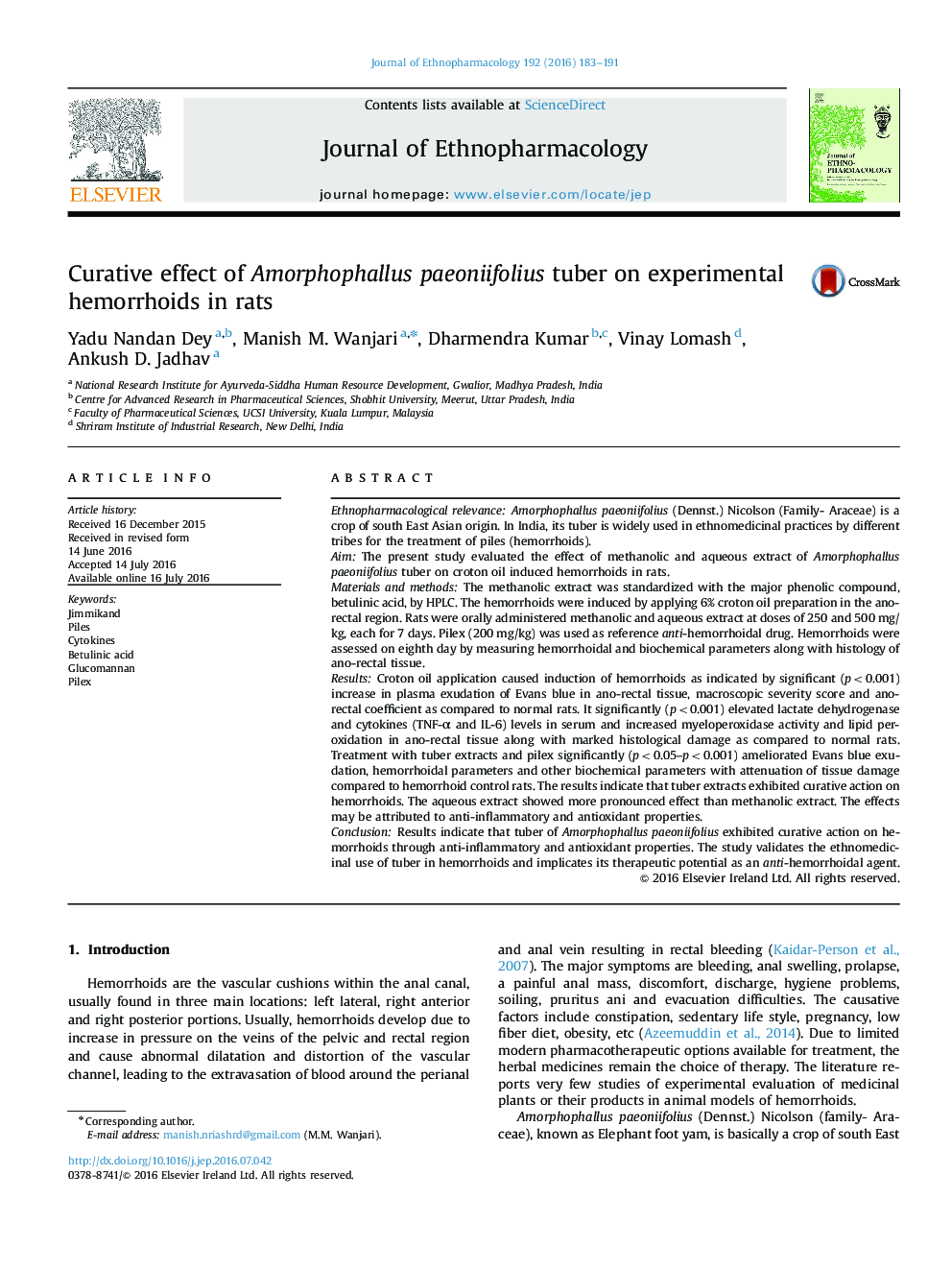| Article ID | Journal | Published Year | Pages | File Type |
|---|---|---|---|---|
| 2544545 | Journal of Ethnopharmacology | 2016 | 9 Pages |
Ethnopharmacological relevanceAmorphophallus paeoniifolius (Dennst.) Nicolson (Family- Araceae) is a crop of south East Asian origin. In India, its tuber is widely used in ethnomedicinal practices by different tribes for the treatment of piles (hemorrhoids).AimThe present study evaluated the effect of methanolic and aqueous extract of Amorphophallus paeoniifolius tuber on croton oil induced hemorrhoids in rats.Materials and methodsThe methanolic extract was standardized with the major phenolic compound, betulinic acid, by HPLC. The hemorrhoids were induced by applying 6% croton oil preparation in the ano-rectal region. Rats were orally administered methanolic and aqueous extract at doses of 250 and 500 mg/kg, each for 7 days. Pilex (200 mg/kg) was used as reference anti-hemorrhoidal drug. Hemorrhoids were assessed on eighth day by measuring hemorrhoidal and biochemical parameters along with histology of ano-rectal tissue.ResultsCroton oil application caused induction of hemorrhoids as indicated by significant (p<0.001) increase in plasma exudation of Evans blue in ano-rectal tissue, macroscopic severity score and ano-rectal coefficient as compared to normal rats. It significantly (p<0.001) elevated lactate dehydrogenase and cytokines (TNF-α and IL-6) levels in serum and increased myeloperoxidase activity and lipid peroxidation in ano-rectal tissue along with marked histological damage as compared to normal rats. Treatment with tuber extracts and pilex significantly (p<0.05–p<0.001) ameliorated Evans blue exudation, hemorrhoidal parameters and other biochemical parameters with attenuation of tissue damage compared to hemorrhoid control rats. The results indicate that tuber extracts exhibited curative action on hemorrhoids. The aqueous extract showed more pronounced effect than methanolic extract. The effects may be attributed to anti-inflammatory and antioxidant properties.ConclusionResults indicate that tuber of Amorphophallus paeoniifolius exhibited curative action on hemorrhoids through anti-inflammatory and antioxidant properties. The study validates the ethnomedicinal use of tuber in hemorrhoids and implicates its therapeutic potential as an anti-hemorrhoidal agent.
Graphical abstractFigure optionsDownload full-size imageDownload high-quality image (231 K)Download as PowerPoint slide
